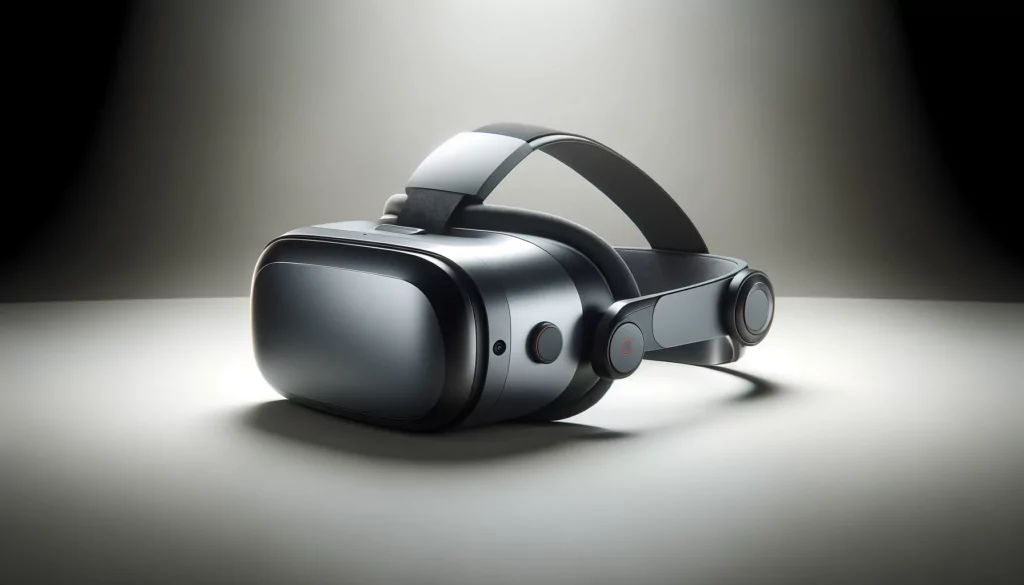In the fast-evolving landscape of technology, virtual reality startups have been gaining significant momentum. With innovations like virtual reality toys, VR pods, remote control experiences, escape room adventures, and immersive animation, the potential for success in this industry is vast.
However, to thrive in 2024, these startups must navigate the competitive market effectively. In this article, we will explore marketing strategies tailored to virtual reality startups, focusing on team building and business-to-business (B2B) approaches. Let’s dive into the world of VR marketing.
The Power of Virtual Reality in 2024
In the realm of technology, virtual reality has established itself as a transformative force. The industry is projected to grow to more than $2 billion by 2029. It’s not just about entertainment; it’s about experiences that engage, educate, and entertain. As virtual reality startups continue to innovate, their products and services are finding applications in various industries beyond gaming and entertainment.
Virtual Reality Toys: Beyond Play
Virtual reality toys have transcended the boundaries of traditional play. In 2024, these interactive gadgets are more than just entertainment; they’re tools for learning and exploration. For virtual reality startups, marketing these toys to educational institutions can be a game-changer. Highlight the educational value of your products and create partnerships with schools and educational organizations. Use engaging content marketing to showcase how VR toys can enhance learning experiences, making them an invaluable addition to classrooms.
Virtual Reality Pods: The Future of Entertainment
VR pods are becoming the go-to destination for immersive entertainment experiences. To stand out in this competitive arena, consider offering unique and unforgettable experiences. Partner with entertainment venues, theme parks, and event organizers to create pop-up VR experiences. Harness the power of social media and influencers to generate buzz and attract a wider audience. Your marketing strategy should focus on conveying the thrill and excitement of VR pod adventures, drawing customers in and making them eager to try it for themselves.
Virtual Reality Remote Control: A New Dimension of Interaction
The virtual reality remote control is a pivotal element in the immersive experience. Whether it’s exploring a virtual world or controlling a simulation, the remote control adds a layer of interactivity that enhances the overall experience. When marketing these controllers, emphasize their user-friendly design and intuitive interface. Target B2B clients in industries like healthcare and training, where precise control is essential. Highlight how your VR remote control can streamline processes, improve training, and reduce errors, making it a valuable asset for businesses.
Escape Room Adventures & Virtual Reality: The Perfect Match
Escape room adventures have taken on a new dimension with virtual reality integration. For virtual reality startups, marketing these experiences involves creating a sense of anticipation and excitement. Collaborate with escape room venues to offer VR-themed escape challenges. Leverage social media platforms to share videos of participants’ reactions, showcasing the thrill of VR escape rooms. Team up with corporate clients for team-building events that combine fun and learning. This approach can be particularly effective for B2B marketing, as businesses seek innovative ways to enhance teamwork and problem-solving skills.
Virtual Reality Animation: Immersive Storytelling
Virtual reality has revolutionized storytelling through immersive animation. For startups in this niche, marketing should focus on the emotional and sensory impact of VR animation. Create captivating narratives that draw audiences into virtual worlds. Collaborate with content creators to develop VR experiences that align with their storytelling goals. Showcase how VR animation can be used in industries like architecture and real estate for immersive property tours. By emphasizing the versatility and emotional connection offered by VR animation, startups can attract a diverse range of clients.
Virtual Reality Startups: Navigating the Market
Virtual reality startups often face unique challenges in a rapidly evolving industry. To navigate the market successfully, consider the following strategies:
1. Build Strong Partnerships
Collaboration is key in the VR industry. Forge partnerships with other startups, content creators, and established companies. By pooling resources and expertise, you can create more compelling VR experiences and reach a broader audience.
2. Content is King
Invest in high-quality content creation. Engaging storytelling and immersive experiences are what set virtual reality apart. Ensure that your content is not only visually stunning but also emotionally resonant.
3. Harness Social Media
Leverage social media platforms to connect with your audience. Share behind-the-scenes content, sneak peeks, and user-generated content to create a sense of community and excitement around your brand.
4. Target B2B Markets
Explore opportunities in the B2B sector. Industries like healthcare, education, and real estate can benefit greatly from VR solutions. Tailor your marketing efforts to address their specific needs and pain points.
5. Stay Ahead of Technology
Keep abreast of the latest technological advancements in VR. Being an early adopter of new technologies can give you a competitive edge and position your startup as an industry leader.
Virtual Reality Team Building: Strengthening Connections

One of the most promising applications of virtual reality in 2024 is team building. Businesses are increasingly recognizing the value of immersive experiences in fostering collaboration and communication among their employees. Virtual reality startups can capitalize on this trend by offering tailored team-building solutions.
The Evolution of Team Building
Traditional team-building activities often involve trust falls and icebreakers. While these methods have their merits, they can feel stale and predictable. Virtual reality introduces a new dimension to team building, allowing teams to engage in thrilling and challenging experiences together. From solving puzzles in a virtual escape room to collaborating on complex simulations, VR team building offers a refreshing change of pace.
Marketing VR Team Building
To effectively market VR team-building experiences, consider the following strategies:
1. Highlight the Benefits
Emphasize the advantages of VR team building, such as improved communication, problem-solving skills, and team cohesion. Use case studies and testimonials to showcase real-world examples of teams benefiting from VR experiences.
2. Customization is Key
Offer a range of customizable experiences to cater to different team dynamics and objectives. Whether it’s a high-energy competition or a collaborative problem-solving challenge, ensure that your VR offerings can be tailored to suit each client’s needs.
3. Showcase Success Stories
Share success stories of businesses that have achieved tangible results through VR team building. Use data and metrics to demonstrate the impact on productivity, employee satisfaction, and teamwork.
4. Offer Virtual Demos
Allow potential clients to experience a virtual demo of your team-building activities. Virtual reality is all about immersion, and providing a taste of what’s in store can be a compelling selling point.
5. Provide Training and Support
Ensure that your clients have access to the necessary training and support to make the most of your VR team-building solutions. This can include technical assistance, facilitator training, and ongoing support.
SEO Optimization for Virtual Reality Startups
In the digital landscape, effective SEO optimization is crucial for virtual reality startups to increase their online visibility and reach their target audience. Let’s delve into SEO strategies tailored to the VR industry, incorporating the provided keywords for maximum optimization.
Incorporating Keywords
To enhance your online presence, it’s essential to integrate the provided keywords strategically within your website content, blog posts, and meta information. For instance, create blog posts that revolve around topics like “Virtual Reality Toys for Educational Use” or “Innovative VR Pod Experiences.” This approach not only caters to SEO but also provides valuable information to your audience.
Meta Information and Titles
Craft concise and compelling meta descriptions and titles that include the focus keyword.
For example, “Virtual Reality Startups: Elevate Your Marketing in 2024 with VR Toys and Pods.” Ensure that these elements accurately represent the content of your pages.
Blog Content Strategy
Develop a comprehensive blog content strategy that covers a range of topics related to virtual reality. Incorporate keywords naturally within your blog posts to attract organic traffic. For instance, write articles on “The Future of Virtual Reality Remote Control Devices” or “Team Building in VR: A New Approach.”
Internal and External Linking
Implement internal linking to guide visitors to relevant pages within your website. Additionally, collaborate with authoritative websites and blogs in the VR industry for guest posting opportunities, incorporating keywords into anchor text for external links.
User Experience and Mobile Optimization
Optimize your website for mobile devices, ensuring that it provides an excellent user experience. Google prioritizes mobile-friendly websites in search results. A seamless mobile experience enhances your SEO efforts.
In Conclusion
2024 promises to be an exciting year for virtual reality startups. By adopting innovative marketing strategies, focusing on team building, and implementing SEO optimization, these startups can thrive in the competitive landscape. Embrace the power of virtual reality to create immersive experiences that captivate audiences and elevate your brand. As you embark on this journey, remember that success in the VR industry is not about following trends but about creating them. Stay ahead of the curve, be adaptable, and continue to explore the limitless possibilities of virtual reality.


